The Aerauto PL.5C was a roadable aircraft developed in Italy in the early 1950s. It was a high-wing two-seat monoplane whose wings could be folded to quickly transform it into an automobile. It was different from many such projects in that it used its pusher propeller for propulsion not only in the air, but on the road as well. Development was abandoned in 1953.

The Dornier Do 27 is a German single-engine STOL utility aircraft, manufactured by Dornier GmbH. Configuration was a classic high-wing, "tail-dragger" aircraft with fixed landing gear.

The Aero-Flight Streak was an American two-seat light aircraft built in 1946 by Aero-Flight Aircraft Corporation at Buffalo, New York. Advanced for its time, it was of all-metal construction with tricycle undercarriage, and accommodated the pilot and passenger in tandem beneath a sliding, bubble canopy.

The Agusta A.115 was a prototype helicopter flown in 1961 in Italy. It was essentially a Bell 47J-3 with an unclad, tubular tail boom, and powered by a Turbomeca Astazou II turboshaft engine. No production ensued.
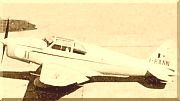
The Ambrosini S.1001 Grifo ("Griffin") was an Italian light airplane that appeared shortly after the end of World War II. The first plane built by SAI Ambrosini postwar, the prototype flew in 1947 and was derived from the pre-war SAI.2S. It was a four-seat monoplane with spatted fixed undercarriage. A small series was produced for the Italian aeroclubs with an Alfa Romeo 110-ter engine of 97 kW (130 hp). Three examples were even bought by the Italian Aeronautica Militare (AMI), which used them between 1948 and 1950.
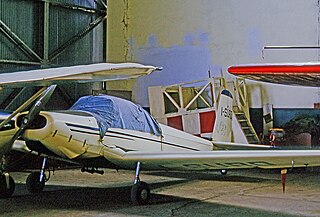
The Aviamilano P.19 Scricciolo was a light civil trainer aircraft built in Italy in the 1960s.

The Avions Fairey Belfair, also known as the Tipsy Belfair after its designer, Ernest Oscar Tips, was a two-seat light aircraft built in Belgium following World War II.

The Bartlett LC-13A Zephyr 150 was a United States light civil aircraft built in the 1940s. It was a mid-wing braced monoplane of conventional design with side-by-side seating for two and fixed, tailwheel undercarriage. It was originally marketed as the Babcock LC-13 by its original manufacturer, then as the Taubman LC-13 when the Babcock Airplane Corporation was acquired by Taubman Aircraft. The rights were finally acquired by Bartlett Aircraft in 1941, but plans to mass-produce it were halted by the outbreak of World War II. There was a brief attempt to revive the design at the end of the war, but nothing came of this.
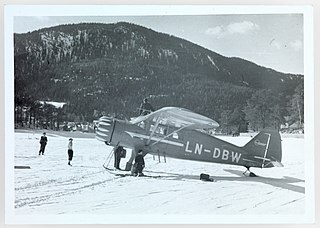
The Widerøe C.5 Polar, sometimes known as the Honningstad C.5 Polar, was a Norwegian general-purpose land or floatplane built by Widerøes Flyveselskap.

The Brochet MB.110 was a four-seat light aircraft developed in France in the early 1950s.
The Brochet MB.120 was a two-seat light aircraft developed in France in the 1950s.

The Colonial Model C-1 Skimmer was an American small single-engined amphibian flying boat built by the Colonial Aircraft Corporation. It was the start of a line of very similar aircraft designed by David Thurston.
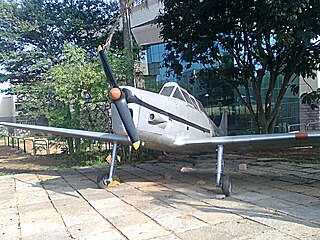
The Hindustan HT-2 is an Indian two-seat primary trainer designed and built by Hindustan Aeronautics Limited. The HT-2 was the first company design to enter production in 1953 for the Indian Air Force and Navy, where it replaced the de Havilland Tiger Moth. The HT-2 is a low-wing cantilever monoplane with a fixed tailwheel landing gear. Powered by a 155 hp (116 kW) Cirrus Major III piston engine, the aircraft has enclosed tandem cockpits with dual controls. Apart from military use, the aircraft was also used by Indian flying schools.
The Partenavia P.55 Tornado is a 1950s Italian high-performance competition and touring monoplane built by Partenavia. The Tornado was a small mid-wing cantilever monoplane with a retractable tricycle landing gear. The aircraft was powered by a nose-mounted Lycoming O-320 piston engine.
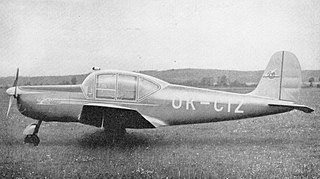
The Mráz M-3 Bonzo was a light aircraft built in Czechoslovakia in 1948 as a further development in the family of light aircraft that had commenced with the M-1 Sokol. The Bonzo was based on the Sokol airframe, but with a redesigned wing and substantial changes to the fuselage. These included lengthening it to allow for the addition of a fourth seat, reducing the height of the rear fuselage to allow for a new cabin with all-around visibility, and the addition of a semi-retractable nosewheel in place of a tailwheel.

The MDG Midgy-Club was a post-war cabin biplane designed and built by Instruments de Precision M.D.G at Garches, France. The company designed and built precision instruments and due to the close relationship with the aviation industry, the company designed and built two aircraft. The first, MDG LD.45, was a single-seat biplane. The MDG LD-261 Midgy-Club was a follow-on design with an enclosed cabin with two seats arranged in tandem layout. It was built in small numbers.
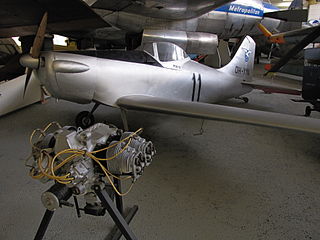
The PIK-11 Tumppu ("Mitten") was a single-seat, single-engine sport aircraft developed in Finland in the 1950s. It was a low-wing, cantilever monoplane of conventional design with an enclosed cockpit and fixed, tailwheel undercarriage. It was to be the first powered aircraft produced by Polyteknikkojen Ilmailukerho, with the objective being building an aircraft for club use that was cheap to build and easy to fly.

The Agusta A.105 was an Italian rotorcraft designed by Agusta. It was never developed beyond the prototype stage.
The Maestranza Central de Aviación Triciclo-Experimental was a prototype Chilean light aircraft of the 1940s.
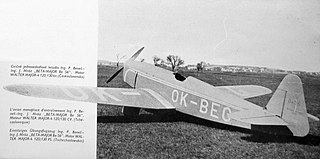
The Beneš-Mráz Be-56 Beta-Major was a single-seat aerobatic advanced trainer manufactured in Czechoslovakia shortly before World War II.
















